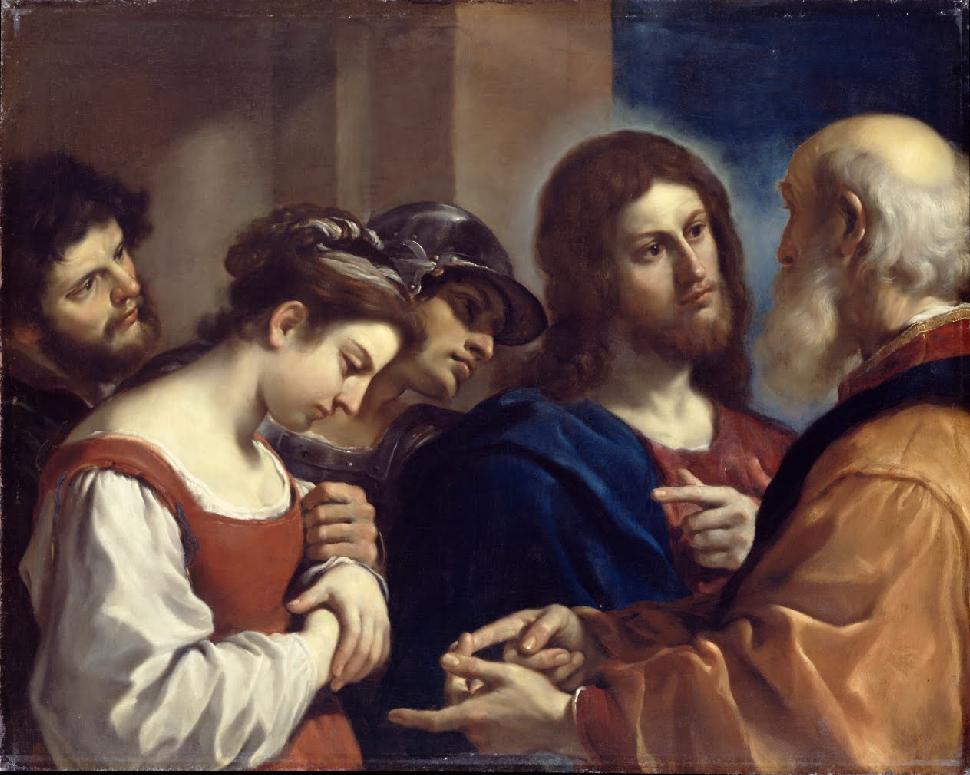
Fifth Sunday of Lent
♦
Fifth Sunday of Lent
Sr. Petite Lao
April 3, 2019
The Gospel reading about “a woman who had been caught in adultery,” is a story that is very familiar to us. Some are reminded of the story as depicted from the movies. Images play in my mind. One scene depicts the woman being dragged and shoved at the feet of Jesus. But this was not in the Gospel. According to John 8, she was made to stand before the people because this is a public trial.
This evidence is not circumstantial; we are told directly, “This woman was caught in the very act of committing adultery.” What might this mean? Deuteronomy 19:15 specifies that for a charge to be sustained, there must be at least two or three witnesses providing evidence. The scribes and Pharisees, who were knowledgeable of the Law, we may assume, had sufficient evidence corroborated by two or more witnesses. Let us withhold for a moment the comment, “They said this to test Jesus so that they might have some charge to bring against him.” Rather, let us proceed with the case at hand. Let us picture Jesus, as a teacher of the Law engaging in a legal debate.
Jewish tradition holds both the written and the oral Torah as authoritative. The latter includes the rabbinic deliberations, which offer precedent for future deliberations of particular cases. It is most unlikely that the written Torah was implemented literally because it would be entirely impossible to do so. Argumentations and deliberations are important in order to make the Torah relevant in personal and communal life. The Talmud is a good evidence of this. This kind of engagement with the Torah is seen here in the actions of the scribes, Pharisees and Jesus. All of them are scholars of the Torah who could deliberate a legal case. The act of Jesus writing on the ground, for me, is symbolic of the oral Torah. It is a reminder that the revelation that is in the written Torah is lived out on earth, in the present, articulated in the here and now, in the “messiness” of our life. Thomas Deans proposes that Jesus’ act of writing is a performance which has a rhetorical quality to provoke reflection and introspection. It is an interruption of the intensity of the argumentation and debate and also had the effect of reconfiguring and dispersing the sense of solidarity experienced among the people present (Deans, 413). The performance of writing silently intensified what Jesus had to say, “Let anyone among you who is without sin be the first to throw stone at her.” Then, one by one, the crowd left, realizing the truth of the spoken words.
Rather than making an accusation of moral arrogance and treacherous intent against the scribes and Pharisees, can we instead entertain the possibility that it was not only Jesus who did not condemn the woman but also the scribes and Pharisees in faithfulness to the Torah when they refused to stone the woman?
Amy Jill Levine nudges us further to consider the aftermath of Jesus’ words to the woman. “In terms of the woman herself, what people fail to ask usually is what happens to her at the end? Jesus never says, ‘I forgive you.’ It’s not about forgiveness, but she is simply left saying you’re not condemned. But now what does she do? She is guilty of adultery; can she go back to her husband? Where is he? How does she fit back within the community? What happens if you’re actually guilty-and she seems to be guilty-when you’re called out on it and the community knows? How are you reconciled to family, how are you reconciled to friends, how are you reconciled to God? The text never tells us. In a sense, that might be the genius of the text.”

The Woman taken in Adultery – Guercino, c.1621
Source: Google Arts & Culture

This week’s teaching commentary was prepared by
Sr. Petite Lao,
RNDM, Toronto, Bat Kol alum 2010, 2014
PLEASE NOTE: The weekly Parashah commentaries represent the research and creative thought of their authors, and are meant to stimulate deeper thinking about the meaning of the Scriptures. While they draw upon the study methods and sources employed by the ISPS-Ratisbonne, the views and conclusions expressed in these commentaries are solely those of their authors, and do not necessarily represent the views of ISPS-Ratisbonne. The commentaries, along with all materials published on the ISPS-Ratisbonne website, are copyrighted by the writers, and are made available for personal and group study, and local church purposes. Permission needed for other purposes. Questions, comments and feedback are always welcome.
Share this with your friends
Share on facebook
Share on google
Share on twitter
Share on whatsapp
Institute Saint Pierre de Sion – Ratisbonne – Christian Center for Jewish Studies
Congregation of the Religious of Our Lady of Sion
Contact us:
secretary@ratisbonne.org.il
26 Shmuel Ha-Naguid Street – Jerusalem
Subscribe to Newsletter

No responses yet